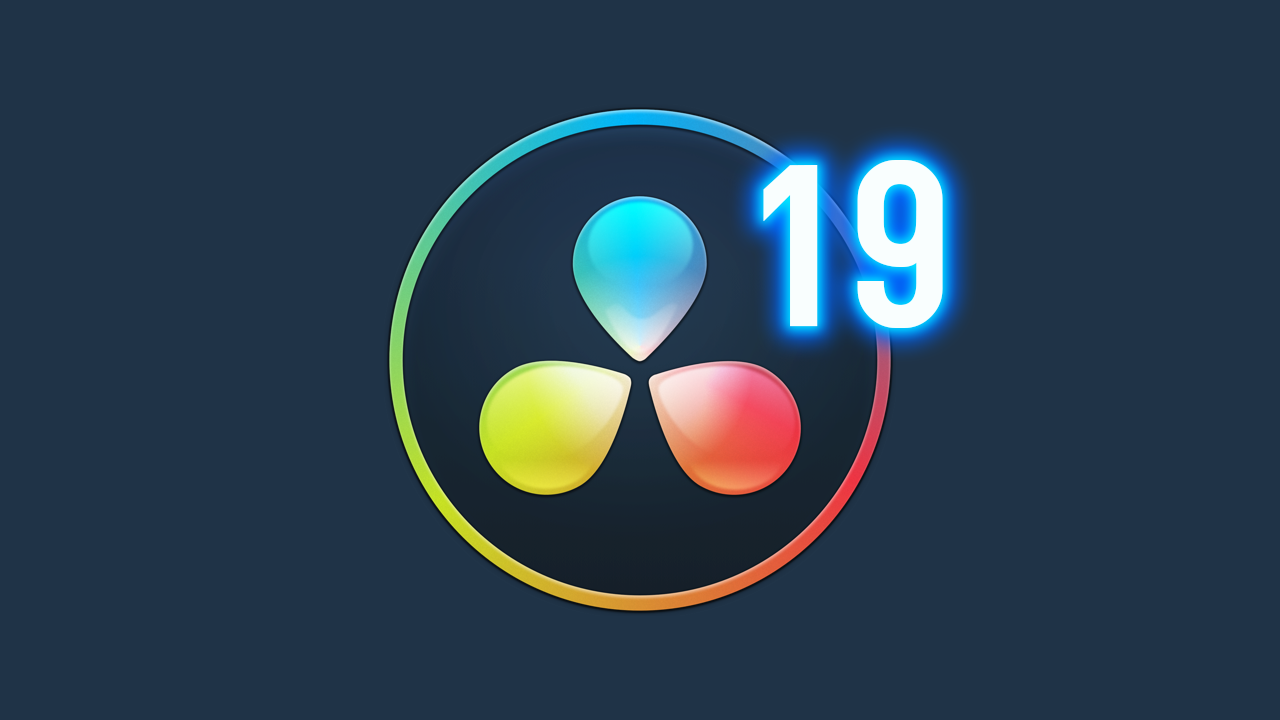Introduction to DaVinci Resolve 19
DaVinci Resolve 19 has emerged as a pivotal tool in the field of video editing, offering professionals and enthusiasts an extensive suite of features designed for advanced creative expression. This latest version introduces significant updates that enhance user experience, streamline workflows, and elevate project quality. With its innovative capabilities, DaVinci Resolve 19 empowers editors to create visually stunning and professionally polished videos.
Among the notable new features is the improved neural engine, which leverages artificial intelligence to automate and refine various aspects of the editing process. This enhancement allows video editors to swiftly generate high-quality edits with minimal manual input, thus dedicating more time to the creative aspects of their projects. Furthermore, the introduction of collaborative capabilities facilitates teamwork, enabling multiple users to work on a project simultaneously, which is increasingly essential in today’s fast-paced production environments.
The color grading tools have also seen advancements, including additional options for HDR grading and enhanced tracking capabilities. These updates enable editors to achieve meticulously crafted color palettes that align perfectly with their creative vision. DaVinci Resolve 19 is designed to cater to a diverse range of users, from independent filmmakers to major production studios, solidifying its position as one of the leading software choices in the industry.
Moreover, the user-friendly interface and extensive compatibility with various formats further contribute to its widespread adoption. Video professionals are particularly drawn to its robust editing features, which accommodate complex projects while remaining accessible to newcomers. As DaVinci Resolve continues to evolve, its significant impact on the video editing landscape becomes more pronounced, attracting a growing community of users eager to harness its capabilities for creating exceptional visual content.
Color Grading Enhancements in DaVinci Resolve 19
DaVinci Resolve 19 brings a plethora of advancements to its color grading capabilities, providing editors with powerful tools to elevate their projects. Among the most significant improvements are the enhanced HDR grading options and advanced artificial intelligence features. These tools offer a more sophisticated approach to color grading, allowing editors to achieve a desired aesthetic more effectively than ever before.
The introduction of improved HDR grading supports a broader color spectrum and dynamic range, enabling creators to produce vibrant visuals that resonate with audiences. With the ability to manipulate highlights, midtones, and shadows more precisely, users can tailor the look of their footage to match the mood and narrative of their projects. In addition to HDR, the AI-driven features facilitate tasks such as automatic scene detection and intelligent color matching, which can significantly streamline the editing process.
Editors looking to achieve specific stylized looks will find the new tools particularly advantageous. For example, by leveraging the AI color wheels, users can easily shift hues and adjust saturation to create distinctive visual experiences. The ability to apply these adjustments non-destructively ensures that editors can experiment freely without compromising the original footage.
Moreover, color correction capabilities in DaVinci Resolve 19 have been optimized for efficiency. The updated interface simplifies navigation through color grading options, allowing editors to quickly identify and rectify color inconsistencies. By utilizing the enhanced features, editors can not only correct footage but also infuse their work with personal flair, ultimately resulting in a more polished final product.
In conclusion, the comprehensive improvements to color grading in DaVinci Resolve 19 empower editors with greater creative control. These advancements not only elevate the visual appeal of projects but also streamline workflows, making it easier than ever to achieve professional results.
Improved Audio Editing Tools
DaVinci Resolve 19 has introduced a variety of new audio editing tools that significantly enhance the capabilities for sound design and audio post-production. One of the most notable updates is found within the Fairlight audio suite, which provides users with a comprehensive set of features for mixing, mastering, and editing soundtracks seamlessly integrated into the editing platform. The improvements in this version remove traditional barriers, allowing video editors to conduct both visual and audio workflows within a single application.
Among the new features, the updated Fairlight tools include an array of advanced audio effects and plugins that streamline sound editing tasks. For instance, users can now apply dynamic EQ, convolution reverb, and various sound processors with ease, making it possible to achieve professional-grade audio without needing to switch to a separate Digital Audio Workstation (DAW). This feature is particularly beneficial for users who are working on projects that require tight deadlines but would still like to maintain high sound quality.
Moreover, the audio editing workflow can now be optimized with new automation features that enable precise control over volume, pan, and effects parameters. By utilizing keyframes, editors can create intricate soundscapes that adapt to the evolving visuals. This advancement allows for greater creative expression, as users can manipulate audio elements in response to interactions in the video content seamlessly.
Specific use cases demonstrate the practicality of these enhancements. A documentary filmmaker can use the Fairlight audio tools to layer voiceovers, ambient sounds, and backing tracks effortlessly, ensuring that all audio components harmoniously blend together. Similarly, music video editors can manipulate sound elements to sync perfectly with visuals, enhancing the overall production quality. The integration of these improved audio editing tools in DaVinci Resolve 19 undoubtedly makes it a powerful choice for both novice and professional content creators alike.
Dynamic Retiming and Speed Effects
Dynamic retiming in DaVinci Resolve 19 is a powerful feature that allows video editors to manipulate the speed of their footage, providing a range of options for creating impactful slow-motion and fast-motion effects. By utilizing these features effectively, editors can evoke emotion, enhance storytelling, and highlight critical action sequences within their projects.
One of the key improvements in DaVinci Resolve 19 is the introduction of advanced optical flow algorithms, which greatly enhance the quality of motion during retiming processes. These algorithms analyze the frames in a video clip and intelligently interpolate intermediate frames to create a smoother flow in slow-motion sequences. This results in a more professional look that minimizes artifacts commonly associated with frame blending and traditional speed changes.
Editors can easily access dynamic retiming options by selecting the clip they wish to modify in the timeline. By adjusting the speed of the clip, they can create eye-catching slow-motion effects perfect for dramatic storytelling, or alternatively, fast-motion effects that add energy to action sequences. For instance, a slow-motion shot can be utilized to emphasize a pivotal moment in a film, allowing viewers to savor the intensity; conversely, a fast-motion sequence can convey a sense of urgency and excitement.
When applying speed effects, it is crucial for editors to consider the context of their footage. Establishing a clear rationale behind the chosen retiming effect can elevate the overall impact of the scene. Best practices suggest maintaining a consistent visual style throughout the project and avoiding excessive speed changes that may distract the viewer.
In conclusion, dynamic retiming and speed effects in DaVinci Resolve 19 significantly enhance the creative potential for video editors. With the incorporation of advanced optical flow algorithms, achieving professional-quality slow-motion and fast-motion effects has never been more accessible, allowing for innovative storytelling techniques. By understanding and applying these features thoughtfully, editors can engage their audiences in a profound and lasting manner.
Enhanced Collaboration Features
In the realm of video production, collaboration among team members is paramount for achieving a cohesive final product. DaVinci Resolve 19 has risen to meet this demand with an array of enhanced collaboration features designed to facilitate teamwork. These advancements allow multiple users to work simultaneously on a project, making it easy to share timelines and assets in real time. This capability is particularly beneficial in modern workflows where teams may be distributed across various locations.
One of the standout features introduced in DaVinci Resolve 19 is the multi-user editing functionality. This allows editors, colorists, and sound designers to work concurrently on different aspects of a project. By having the ability to make changes in real-time, teams can streamline their processes and minimize the back-and-forth often associated with traditional editing workflows. Furthermore, editors can leave comments and notes directly within the project, enabling clearer communication among team members and ensuring that everyone is aligned on creative objectives.
The introduction of the cloud-based collaboration tools also enhances the way remote teams operate. With the growing trend of remote work, these tools allow professionals to access projects from various locations without compromising on efficiency. Users can securely upload and share assets, ensuring that all team members have access to the latest materials. This not only promotes a more fluid workflow but also fosters a sense of unity among team members despite physical distances.
To effectively utilize these collaboration features, it is advisable for teams to establish clear roles and protocols. Utilizing version control can help prevent conflicts when multiple users are editing simultaneously. As video production becomes increasingly collaborative in nature, leveraging the enhanced tools in DaVinci Resolve 19 can lead to more innovative and polished final products.


